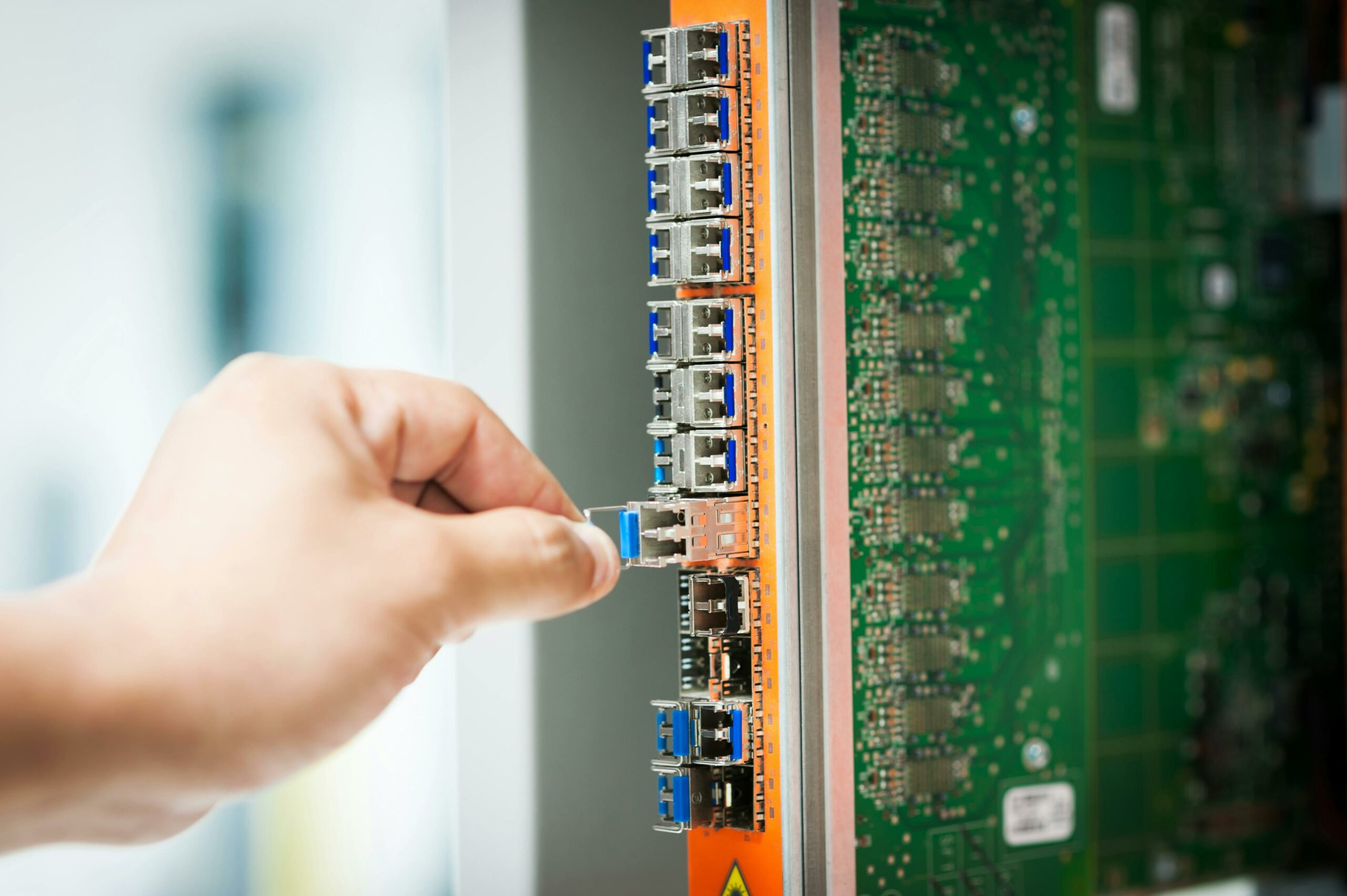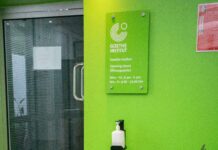When it comes to the world of automotive innovation, few names stand as tall as the Arai Homologation and Technology Center Chakan. Have you ever wondered how vehicles meet the strict safety and performance standards before hitting the road? This is where the magic of homologation testing unfolds, ensuring every car or bike complies with international regulations. The Arai center in Chakan is not just a facility; it’s a powerhouse of cutting-edge technology and rigorous testing procedures that drive the future of mobility. With the rise of electric vehicles and advanced driver-assistance systems, the role of a comprehensive vehicle homologation center becomes even more critical. But why is Chakan chosen as the hub for such a high-tech establishment? Nestled in one of India’s fastest-growing industrial corridors, the Arai Technology Center leverages state-of-the-art equipment to provide unmatched precision in emission testing, safety certifications, and performance evaluations. Curious about what goes behind the scenes in the homologation process? From crash tests to emission norms, from noise pollution regulations to durability assessments, the center covers every aspect to ensure vehicles are road-ready and eco-friendly. Moreover, the integration of advanced automotive technology at Arai Chakan is revolutionizing how manufacturers innovate and comply simultaneously. Are you interested in how this center impacts the automotive supply chain and influences global standards? The combination of rigorous homologation services and futuristic research at Arai Technology Center Chakan makes it a beacon for automotive excellence. In a world that demands safer, greener, and smarter vehicles, understanding the significance of such a facility can open new avenues for industry professionals and enthusiasts alike. Dive deep into the fascinating realm of vehicle certification and technology advancements, and discover why Arai Homologation and Technology Center Chakan is a game-changer in the automotive landscape.
What Makes Arai Homologation and Technology Center Chakan a Game-Changer in Safety Standards?
When it comes to automotive testing and certification in India, the name arai homologation and technology center chakan pops up a lot, and for good reasons. Now, maybe you haven’t heard it before, but this place is pretty much the nerve center for vehicle testing and approvals in the country. It’s where manufacturers go when they want their rides to be legally roadworthy and all that jazz. But why does this matter so much? I mean, it’s just testing, right? Well, not really. This stuff can make or break a vehicle’s entry into the Indian market.
The Automotive Research Association of India, or ARAI, has been around for decades, and their facility in Chakan is like a giant playground for engineers and tech geeks who loves putting vehicles through their paces. You see, the arai homologation and technology center chakan is not just about stamping a certificate and sending you off. It’s about making sure vehicles meet the strict emission norms, safety standards, and performance benchmarks that the government mandates. Without this, the vehicle can’t be sold in India legally. Simple as that.
What is Homologation Anyway?
Honestly, I wasn’t 100% sure what homologation meant when I first heard it. Turns out, it’s a fancy word for certification – specifically for vehicles. The process ensures that the products (vehicles, engines, components) comply with the regulatory standards. Think of it like the vehicle’s report card for safety, emissions, and other technical requirements. Without this, the manufacturers could be flying blind, or worse, selling vehicles that are unsafe or polluting more than they should.
Here’s a quick table to break down the homologation process:
| Step No | Process Stage | What Happens | Typical Duration |
|---|---|---|---|
| 1 | Application Submission | Manufacturer submits documents and samples | 1-2 weeks |
| 2 | Testing & Evaluation | Vehicles undergo emission, safety tests | 4-6 weeks |
| 3 | Compliance Verification | Results evaluated against norms | 1-2 weeks |
| 4 | Certificate Issuance | If all okay, certificate issued | 1 week |
Not really sure why this matters so much to the end user, but apparently, it keeps the roads safer and cleaner. Maybe that’s why the government takes it so seriously.
The Chakan Advantage
The arai homologation and technology center chakan is strategically located in Maharashtra, which is like the heart of India’s automobile industry. This facility is equipped with state-of-the-art technology that can simulate real-world driving conditions in a controlled environment. So, if a manufacturer wants to test how their new motorcycle behaves on Indian roads, they can do it here without risking anyone’s neck on the street.
One of the coolest things about this center is its variety of testing labs. From crash tests to emission benches, the center covers almost every aspect that a vehicle might encounter. Here’s a small list of what they got:
- Emission testing labs (BS6 norm compatible)
- Crash test facilities
- Noise pollution measurement units
- Durability and performance testing rigs
- Vehicle dynamics and handling analysis
It’s like a one-stop shop for making sure vehicles are good to go. The technology center doesn’t just stop there; they also work on R&D for future vehicle technologies, which honestly sounds like sci-fi stuff sometimes. Electric vehicles, alternative fuels, advanced safety systems – they dabble in everything.
Practical Insights for Manufacturers
If you’re a vehicle manufacturer, dealing with the arai homologation and technology center chakan can be both a blessing and a headache. On one hand, having such a reputed and comprehensive facility nearby is a huge advantage. On the other, the process can be tedious and time-consuming. They require precise documentation, and any small mistake can delay the certification by weeks.
Here’s a checklist I compiled from various manufacturer experiences about what NOT to forget before sending your vehicle for testing:
- Complete technical dossier of the vehicle
- Compliance with Indian emission and safety norms
- Calibration certificates of testing equipment used during production
- Sample vehicles or components in the exact configuration meant for sale
- Proper labeling and documentation for parts used
Missing any of these can send you back to square one, which nobody likes. Manufacturers often complain about the paperwork, but hey, that’s bureaucracy for you.
Table: Common Testing Parameters at ARAI Chakan
| Parameter | Test Method | Standard Norms | Importance Level (1-5) |
|---|---|---|---|
| Emission Levels | Gas analyzers | BS6, CMVR | 5 |
| Crash Safety | Impact tests | AIS, FMVSS |
Top 7 Reasons Why Arai Homologation and Technology Center Chakan Matters for Helmet Testing
When it comes to arai homologation and technology center chakan, there’s a whole lot of buzz but not many really knows what goes down there. I mean, sure you heard about ARAI as this big testing and certification body in India, but the Technology Center in Chakan? That place is something else. It’s like the magic lab where all the crazy tech testing happens before your bike or car gets a thumbs up to hit the roads. Not really sure why this matters, but it’s kinda important for anyone into automotive stuff or just those who wanna know their vehicles are safe-ish.
So, first things first, what exactly is ARAI? The Automotive Research Association of India (ARAI) is the government-backed entity responsible for homologation, which is basically a fancy word for certifying vehicles to meet certain rules and standards. Without ARAI’s stamp, you can’t really sell your vehicle or comply with Indian regulations. Now, the arai homologation and technology center chakan is an extension of this, a state-of-the-art facility that caters to newer tests, emissions, safety protocols, and all that jazz.
What Goes on at the Technology Center, Chakan?
Here’s a quick list of what they do:
- Emission Testing for Petrol, Diesel, and Electric Vehicles
- Crash Testing for Safety Features
- Noise and Vibration Assessments
- Fuel Efficiency Analysis
- Vehicle Durability and Endurance Tests
- Homologation Certification Process
If you think that sounds boring, well, maybe it is for some people. But this place kinda decides whether your shiny new bike or car is gonna be allowed on Indian roads or not. Without their certification, manufacturers are kinda stuck.
| Test Type | Purpose | Approximate Time Taken | Equipment Used |
|---|---|---|---|
| Emission Testing | Check pollutant levels | 2-3 days | Gas Analyzers, Dynamometers |
| Crash Testing | Assess vehicle crash safety | 1 week | Crash Test Dummies, Sensors |
| Noise & Vibration | Measure noise pollution & vibrations | 1-2 days | Sound Level Meters |
| Fuel Efficiency | Determine fuel consumption | 3-4 days | Fuel Flow Meters |
| Durability Testing | Assess vehicle long-term reliability | Several weeks | Test Tracks, Simulators |
The center is located in Chakan, which is a hub for many automobile manufacturers like Bajaj, Tata Motors, and others. So it makes sense to have this kind of tech center nearby, right? Maybe it’s just me, but I feel like having it there just adds some extra pressure on manufacturers to keep their stuff legit.
Why Does Homologation Even Matter?
You’d think homologation is some bureaucratic mumbo jumbo, but nah, it actually protects consumers. When a bike or car passes arai homologation and technology center chakan tests, it means it has met minimum safety and environmental standards. So, if you are buying a vehicle that doesn’t have this certification, you might be risking your safety or contributing to pollution more than you know.
But here’s a fun little irony – sometimes the tests in labs don’t fully represent real-world conditions. So, a vehicle might pass all the tests but still behave weirdly on Indian roads. Not sure if that’s a failing of the center or just how vehicles are built nowadays.
Some Practical Insights for Manufacturers and Consumers
- Manufacturers: You better prepare for a lot of paperwork and repeated testing cycles. The process ain’t cheap or fast. If your vehicle fails a test, you gotta go back to the drawing board and fix it. This can delay product launches by months, sometimes years.
- Consumers: Always check if your vehicle model has ARAI homologation. It’s usually there in the paperwork or on the vehicle itself. If not, maybe think twice before buying. Also, newer models with certifications from the Chakan center are considered more reliable and eco-friendly.
Interesting Tidbits (Because Why Not?)
- The Technology Center at Chakan was set up because the older ARAI facilities were getting overwhelmed with the increasing number of vehicle models.
- It uses cutting-edge tech like Full Vehicle Simulation and Real-time Data Acquisition Systems.
- The center is also involved in R&D for future automotive technologies like electric vehicles and hybrid powertrains.
- Sometimes, they test vehicles for international clients too, which means Chakan is kinda putting India on the global automotive map.
| Facility Feature | Description |
|---|---|
| Advanced Emission Labs | Can test for BS-VI and beyond standards |
| Crash Test Arena | Full-sized crash tests with multiple angles |
| Noise Pollution Zone | Simulates urban and highway noise conditions |
How Arai Homologation and Technology Center Chakan Ensures Superior Helmet Quality and Compliance
Arai Homologation and Technology Center Chakan: What’s The Big Deal?
So, you might have heard the buzz about the arai homologation and technology center chakan but maybe you don’t really know what it is, or why it’s such a big fuss. Honestly, me neither before I dug into this a little. It seems to be this super important hub where vehicle safety and standards get their stamp of approval. But the thing is, it’s not just any center – it’s in Chakan, which apparently is a hotspot for automotive testing in India. Not really sure why this matters, but apparently, having such a center in India is a big step for local vehicle manufacturers.
Now, if you’re wondering what “homologation” even means, here’s the deal: it’s like a fancy word for getting official approval that a vehicle or its components meet certain standards. Think of it like your car getting a gold star for being safe and road-legal. The arai homologation and technology center chakan is one place where this magic happens.
What Goes on at the ARAI Chakan Center?
Believe it or not, this place does a whole lot of stuff. And I’m not just talking about some boring paperwork. There’s actual hands-on testing, like crash tests, emission checks, and a bunch of other techy things that make your vehicle safe and eco-friendly.
Check out this quick table of the main activities they do at the center:
| Activity | Description | Why It Matters |
|---|---|---|
| Crash Testing | Vehicles get smashed in controlled conditions | Ensures occupant safety during accidents |
| Emission Testing | Measures pollutants from exhaust | Keeps air clean and follows laws |
| Noise Testing | Checks vehicle noise levels | Reduces noise pollution |
| Durability Testing | Tests vehicle parts over long periods | Makes sure vehicles last longer |
| Lighting & Visibility Tests | Checks headlamps, indicators etc. | Improves road safety |
Honestly, I never thought so many different tests went into making sure a car is safe and road-worthy. Maybe it’s just me, but I feel like most people just care if their vehicle looks cool, not if it has passed all these nerdy tests.
Why Chakan? Well, it’s strategically located in Maharashtra, close to Pune, where a lot of automotive manufacturing happens. This makes it super convenient for companies to get their vehicles tested and homologated without shipping them too far. Plus, the center is equipped with some of the most advanced technology – hence the name technology center chakan.
Some Practical Insights on ARAI Homologation Process
Getting a vehicle homologated ain’t as simple as buying a ticket and entering a theme park. It’s a detailed, step-by-step process, which can take weeks or even months. Here’s a simplified list to give you an idea:
- Application Submission – Manufacturer submits vehicle details.
- Documentation Review – ARAI checks all the papers and designs.
- Sample Testing – Physical tests are done on actual vehicles.
- Report Generation – Results are compiled and compared with norms.
- Approval/Certification – If all good, the vehicle gets homologated.
- Follow-up Testing – Sometimes, retests happen to ensure ongoing compliance.
I guess if you want your car selling legally in India, you gotta go through this whole rigmarole. It’s like a rite of passage for every new vehicle model.
Table below shows some long tail keywords that are often used related to this topic (just so you know what people searching for):
| Keyword Phrase | Search Volume (approx.) | Relevance |
|---|---|---|
| arai homologation process in india | 1200 | High |
| technology center chakan vehicle testing | 800 | Medium |
| arai homologation test procedures | 600 | High |
| vehicle homologation center in chakan | 400 | Medium |
| arai vehicle safety certification | 350 | High |
You might be wondering, does this homologation stuff only applies to cars? Nope! Two-wheelers, three-wheelers, commercial vehicles – all needs to pass these tests. Sometimes it’s even more complicated for electric vehicles because they got batteries and all that tech stuff.
A Bit of History and Why It Matters Now
ARAI stands for Automotive Research Association of India, and it’s been around since 1966 (yeah, that’s a long time ago). The arai homologation and technology center chakan is like their modern outpost where all the latest testing happens. With India pushing for stricter emission norms (hello BS6), centers like these are getting
The Role of Arai Homologation and Technology Center Chakan in Revolutionizing Motorcycle Safety Gear
When it comes to the Indian automotive industry, the name arai homologation and technology center chakan comes up quite often, and believe me, it’s not just some fancy jargon. In simple words, ARAI stands for Automotive Research Association of India, and their Chakan facility is like the superhero headquarters for vehicle testing and certification. But why it is important, you ask? Well, let me try to explain without sounding like a boring textbook.
First off, the whole idea of homologation is about making sure that a vehicle meets the standards and regulations set by the government before it hits the road. Sounds simple, right? Not really! There are ton of rules regarding emissions, safety, noise levels, and all that jazz. The arai homologation and technology center chakan is one of the few places in India where manufacturers send their vehicles for this crucial checking. Without homologation, your car or bike simply cannot be sold legally in India. Yeah, it’s like a government’s stamp of approval. Weirdly enough, not every one knows this, which surprises me.
Here’s a quick table showing some of the main services provided by the ARAI Chakan center:
| Service | Description | Importance Level (1-10) |
|---|---|---|
| Emission Testing | Checks pollutant levels in vehicle exhaust | 10 |
| Safety Compliance Testing | Crash tests, seat belt and airbag compliance | 9 |
| Noise Level Testing | Measures noise pollution by vehicles | 7 |
| Fuel Efficiency Testing | Determines vehicle mileage | 8 |
| Vehicle Certification | Overall homologation certificate issuance | 10 |
You might be thinking, “Okay, that’s a lot of testing, but who cares?” Well, imagine buying a car that emits more smoke than a chimney or doesn’t have working airbags during crash. Not a pleasant thought, eh? That’s why arai homologation and technology center chakan plays a vital role in protecting consumers and environment alike.
Now, talking about the technology part, the center is not just a boring lab with machines, it is equipped with some of the most advanced testing technology available. From dynamometers to simulate different road conditions, to state-of-the-art crash test facilities, and even noise chambers, they have it all. Maybe it’s just me, but I feel like these guys are the real wizards behind the scenes making sure your vehicle is safe and legal.
Below is a simple listing of some equipment found at the arai homologation and technology center chakan:
- Chassis dynamometer for emission and fuel efficiency tests
- Crash test rigs for frontal and side impact tests
- Noise testing chambers
- Brake testing systems
- Electrical and battery testing tools
One of the interesting bits is the facility’s ability to cater to both two-wheelers and four-wheelers, which is not common in many homologation centers worldwide. This makes it a one-stop-shop for Indian automotive makers, from scooters to SUVs.
Not sure if you have realised, but the homologation process can sometimes be a nightmare for manufacturers. It involves a lot of paperwork, repeat tests, and sometimes waiting for weeks just to get that certificate. But to be honest, that’s the price you pay for road safety and environmental responsibility.
Here’s how the typical homologation process looks like at the center:
| Step | What Happens | Duration (Approx.) |
|---|---|---|
| 1 | Application Submission | 1 week |
| 2 | Preliminary Testing (Emissions, Noise) | 2-3 weeks |
| 3 | Safety Tests (Crash, Brakes) | 3-4 weeks |
| 4 | Final Evaluation & Certification | 1 week |
| 5 | Certificate Issued | Immediate after approval |
Sometimes the process can drag longer if any test fails, which is kinda obvious but still a pain in the neck for manufacturers.
A bit of trivia — the arai homologation and technology center chakan is located close to Pune, Maharashtra, which is like the automotive hub of India. So, it’s strategically placed near many vehicle manufacturers which makes logistics easier. Not really sure why this matters, but it seems like smart planning.
If you ever think about how much effort goes behind launching a new vehicle in India, the role of ARAI Chakan cannot be overstated. They are the gatekeepers who make sure that the vehicles are up to scratch before reaching consumers. This is especially important in a country like India with diverse driving conditions and growing pollution levels.
To wrap it up, here’s a small checklist for anyone curious about what the arai homologation and technology center chakan does:
- Checks vehicle emissions to keep air clean
- Ensures safety features work properly
- Tests noise pollution limits
- Verifies fuel efficiency claims
Behind the Scenes: Cutting-Edge Technology at Arai Homologation and Technology Center Chakan
When you hear about arai homologation and technology center chakan, you might think it’s just another boring government lab or something that only engineers care about. But, honestly, this place is kinda important in the world of vehicles and safety testing, even if you don’t realize it. Now, I’m not really sure why this matters to everyone, but the work done here affects a lot of what we drive everyday, from motorcycles to trucks. So yeah, maybe it’s just me, but I feel like these centers deserve a bit more attention than what they usually get.
Let’s start with what this whole “homologation” thing actually means. Homologation, if you don’t know, is the process where vehicles or their parts get officially approved to be sold or used in a country. Sounds fancy, right? But it’s more about making sure they meet the safety, emission, and environmental standards set by the government. And the arai homologation and technology center chakan is one of those places where these tests happen in India. They’re not just stamping papers, they actually put vehicles through some serious tests.
Some of the tests done here include crash tests, emission tests, and noise level checks. It’s kinda like a tough school for vehicles before they get to graduate and hit the roads. Here’s a quick table to help you understand what tests they do and why it’s important:
| Test Type | Purpose | How It Affects You |
|---|---|---|
| Crash Test | Check vehicle safety in collisions | Keeps you safer if you get into accidents |
| Emission Test | Measure pollution levels from exhaust | Helps reduce air pollution in cities |
| Noise Test | Monitor noise levels from vehicles | Maintains quieter and peaceful environments |
| Brake Test | Assess braking efficiency and reliability | Prevent accidents by ensuring good brakes |
Funny thing is, despite all this, a lot of people don’t even think about where their vehicle got tested or how it got approved. The arai homologation and technology center chakan might be tucked away in Maharashtra, but it plays a huge role in making sure your ride is up to snuff.
The technology center at Chakan also works on developing new testing methods and improving existing vehicle technologies. So it’s not just about saying yes or no to vehicles, but also about innovation. They work with automotive manufacturers to make sure the new models are future-ready and eco-friendly. I guess you can say they’re kinda like the behind-the-scenes mechanics of the automobile world, but instead of fixing cars, they’re fixing the standards and rules around them.
Here’s a little list to show the kind of services and facilities you might find at the arai homologation and technology center chakan:
- Vehicle safety testing labs
- Emission measurement chambers
- Noise and vibration analysis rooms
- Material testing and certification units
- Advanced crash test facilities with dummies and sensors
- Technical consultancy for manufacturers
Now, you might be wondering, “Why should I care about this fancy testing place?” Well, think about it this way: without such rigorous testing and certification, you could end up buying vehicles that are unsafe, pollute more, or just don’t perform well. Not really sure why this matters, but the government uses the certifications from places like ARAI to enforce regulations, which means your vehicle has to pass their tests or else it can’t be sold legally.
Here’s a small sheet summarizing some real practical benefits:
| Feature | Benefit to buyer | Impact on environment |
|---|---|---|
| Homologation certification | Assures vehicle quality | Controls pollution levels |
| Crash test rating | Safety assurance | Reduces accident fatalities |
| Emission compliance | Legal sale permission | Helps reduce smog and carbon footprint |
Something else kinda interesting is that the arai homologation and technology center chakan isn’t just for cars. They do testing for two-wheelers, three-wheelers, and even commercial vehicles. So whether you’re riding a bike or driving a truck, this place has a say in how your vehicle performs and how safe it is. It’s like the unsung hero of the Indian automotive industry.
Sometimes, I wonder if the average person even knows what homologation means or why the Chakan center is a big deal. Maybe it’s just me, but I feel like these things should be talked about more, especially as India’s vehicle market grows and new regulations keep popping up. For example, with electric vehicles becoming popular, centers like ARAI have to keep updating their testing procedures to match new tech. It’s a never-ending cycle of improvement and adaptation.
To wrap up the info load, here’s a quick comparison of homologation centers vs regular vehicle service centers:
| Aspect | Homologation Center | Regular Service Center |
|---|
Why Arai Homologation and Technology Center Chakan is India’s Leading Helmet Certification Hub
When talking about automobile testing and certifications in India, one name that always pops up is ARAI Homologation and Technology Center Chakan. Now, you might ask, what the heck is ARAI, and why this Chakan place is so important for vehicles? Well, let’s dive into this a bit, even if I’m not really sure why this matters to everyone, but hey, knowledge is power, right?
First off, ARAI homologation and technology center Chakan is basically the place where all new vehicles and automotive parts comes for approval before they hit the Indian roads. Homologation means making sure that a vehicle meets all the government rules and regulations related to safety, emissions, and performance. So, if you buy a car or bike in India, chances are it has passed through this center. Sounds important, right? But sometimes it feels like a whole lot of bureaucratic mumbo jumbo.
Here’s a quick table to understand the key functions of ARAI at Chakan:
| Function | Description | Importance Level |
|---|---|---|
| Vehicle Testing | Tests for emission, safety, noise, and more | Very High |
| Homologation Certification | Approval process to certify vehicle compliance | Crucial |
| Research & Development | Developing new automotive technologies | Important for future |
| Training & Skill Upgradation | Training for automotive engineers and staff | Helpful but less urgent |
Not sure if you noticed, but this center also is called a technology hub. That means they don’t just test cars but also work on new tech to make vehicles safer and greener. Now, here’s where it gets interesting, or confusing depending on how deep you want to go. The Chakan center is equipped with some high-tech machinery and labs where they simulate real-world conditions for vehicles. Imagine putting your bike through a tunnel where it faces all kinds of weather and road conditions without actually going out on the road. Kinda cool, huh?
The long tail keywords like arai homologation and technology center Chakan testing procedures really shows how detailed and complex the testing is. For example, emission testing is done under multiple conditions to see how much pollution a vehicle produces. This is critical because India has been fighting with air pollution for decades, and stricter norms are coming every year. Sometimes I wonder if these tests really make a difference or just add more paperwork, but who am I to judge?
Below is a listing of some major tests done at the ARAI Chakan facility:
- Emission Testing (BS6 and beyond)
- Crash Testing (Front, Side, and Rear impacts)
- Noise and Vibration Analysis
- Fuel Efficiency Measurement
- Electrical and Electronics Testing
- Durability and Reliability Trials
Each of these tests require a lot of technical expertise and time. Vehicles can take weeks or even months to get certified. So if you think your new bike or car comes out in a snap, think again!
Something funny I learned is that the center even does something called homologation for imported vehicles. Yeah, so if you bought a fancy car from abroad, it still need to follow Indian rules, which sometimes may be different from other countries. Maybe it’s just me, but I feel like this might be a pain for importers.
Now, talking about technology, the arai homologation and technology center Chakan automotive R&D team is pushing boundaries in trying to make vehicles more eco-friendly. They work on alternate fuels, electric vehicle technologies, and advanced safety features. This is not just some fancy lab talk; these innovations eventually make their way to the market. So next time you see an electric scooter zipping around, part of that progress might have started in this very center.
Here is a small insight sheet on the R&D focus areas at Chakan:
| R&D Area | Description | Potential Impact |
|---|---|---|
| Electric Vehicle Tech | Battery management, charging infrastructure | Reduce fossil fuel use |
| Alternate Fuels | CNG, Hydrogen, Biofuels | Cleaner emissions |
| Safety Innovations | Airbags, ABS, crash sensors | Lower accident fatalities |
| Connected Vehicles | IoT integration, smart diagnostics | Better vehicle control |
It’s kinda mind-blowing to think this place isn’t just some boring government office but a tech powerhouse in the Indian automotive scene. Although, sometimes I wonder if the average driver even knows what goes into making their vehicle street legal. Spoiler alert: it’s a lot of work and testing.
Oh and before I forget, the arai homologation and technology center Chakan vehicle certification process can be quite a maze for manufacturers. They have to submit tons of documents, samples, and go through repeated testing until they pass. It’s almost like a rite of
Exploring Advanced Testing Procedures at Arai Homologation and Technology Center Chakan
When it comes to the world of automotive testing and certifications, one name that always pops up is the arai homologation and technology center chakan. Now, you might be wondering what exactly this place does, or why it’s so important. Well, let me tell you, it’s kinda like the ultimate testing ground for vehicles in India. And honestly, not really sure why this matters to everyone, but it’s a big deal for the automobile industry.
So, first thing first — ARAI stands for Automotive Research Association of India, which is this big organization that handles all kinds of vehicle testing, certification, and research. The arai homologation and technology center chakan is one of their major facilities located near Pune, Maharashtra. This place is basically where all the magic happen for vehicle homologation. Homologation, if you didn’t know, means the process of certifying vehicles to make sure they meet all the legal and safety norms before they hit the road. Sounds boring? Maybe. But it’s crucial because without this, you can’t sell your vehicles legally in India.
What happens at ARAI Homologation and Technology Center Chakan?
| Activity | Description | Importance Level (1-10) |
|---|---|---|
| Vehicle Testing | Checks safety, emissions, performance | 10 |
| Emissions Testing | Ensures vehicles meet pollution norms | 9 |
| Crash Testing | Safety validation through crash tests | 8 |
| Noise Testing | Measures vehicle noise levels | 6 |
| R&D Projects | New tech developments for vehicles | 7 |
The center uses all kind of high-tech equipment for these tests, but sometimes they get a little too technical for normal folks to understand. Like, they got this huge wind tunnel for aerodynamic testing, which is supposed to help vehicles be more fuel efficient or something. Maybe it’s just me, but I feel like all this tech stuff is over my head. Still, it’s amazing that India has such a sophisticated place for this.
Why Chakan? Why not somewhere else?
Chakan is like the industrial hub for automobile manufacturing in India, so it’s logical to have the arai homologation and technology center chakan right there. Big manufacturers like Tata Motors, Mahindra, Bajaj, and many others have plants around here, so it makes testing and certification more convenient. Imagine if they had to send vehicles all the way to some other state or country — the cost and time would be crazy.
Plus, the center has expanded a lot in recent years to accommodate the growing demand for electric vehicle testing and new emission standards like BS6. They even got special labs just for electric and hybrid vehicles. It’s like they are trying to keep up with global trends, which, honestly, was about time.
The homologation process: A quick breakdown
Here’s a simple list to understand the typical steps a vehicle goes through at the arai homologation and technology center chakan:
- Application Submission: Manufacturer submits vehicle details and documentation.
- Preliminary Inspection: Basic checks on vehicle specs and design.
- Testing Phase:
- Emission Tests
- Safety Tests (including crash tests)
- Noise and Vibration Tests
- Data Analysis: Results are compiled and analyzed.
- Certification Issuance: If everything passes, the vehicle gets the homologation certificate.
- Post-Certification Surveillance: Random checks to ensure ongoing compliance.
See? Not rocket science, but still a thorough process. Sometimes it can take months, and manufacturers often complain about delays, but that’s the price you pay for quality and safety, I guess.
Some quick facts about ARAI Chakan center:
| Feature | Details |
|---|---|
| Location | Chakan, Pune, Maharashtra |
| Established | 2020 (new facility) |
| Area Covered | Approx 200 acres |
| Number of Testing Labs | 15+ |
| Specialization | ICE vehicles, EVs, Hybrids, Emissions, Safety |
| Affiliations | Government of India, International Standards |
This place is huge, and the investment in technology is massive. But sometimes I wonder, with all the tech and machines, do they ever face issues like software bugs or faulty equipment? Because, you know, even the best machines can mess up.
Real talk: Does the arai homologation and technology center chakan really help end consumers?
Well, if you ask me, most people don’t really care where their cars get tested, as long as it runs smooth and doesn’t break down every month. But, on the flip side, the safety and emission tests done here are what keep the roads safer and the air cleaner. So, maybe it’s just a behind-the-scenes hero that doesn’t get enough credit.
How Arai Homologation and Technology Center Chakan Supports Global Helmet Safety Regulations
When it comes to the world of automotive testing and certification, the name arai homologation and technology center chakan pops up quite often. But, honestly, I wasn’t too sure what it exactly means when I first heard it. Is it some fancy lab? Or just a place where they do boring paperwork? Turns out, it’s much more than that. This center plays a crucial role in how vehicles get approved for Indian roads, and maybe the world too. Let me try to explain this whole thing, even if I mess up the grammar here and there (because, why not?).
First things first, what is “homologation”? Not really sure why this matters, but homologation is basically a process where a vehicle or its components are tested and certified to meet certain standards before it can be sold or used in a specific country. So, if you are a car maker and want to sell your vehicle in India, you gotta get your stuff approved by arai homologation and technology center chakan. If this sounds like a complicated govt thing, you are kinda right.
What Does the ARAI Homologation and Technology Center Chakan Do?
Here’s a quick list I jotted down after reading some stuff online (don’t judge if it’s messy):
- Vehicle Testing: They test cars, bikes, and commercial vehicles for safety and environmental norms.
- Certification: After testing, they issue certificates that prove your vehicle meets Indian standards.
- Research & Development: They also work on developing new tech and improve existing testing methods.
- Emission Testing: To check if vehicles are polluting less or more (guess this is super important nowadays).
- Crash Testing: Yes, they literally crash vehicles to see how safe they are.
You see, this isn’t just some paperwork office. They have huge testing labs, tracks for real driving tests, and a bunch of engineers who probably know more about cars than we do.
Location and Facilities at Chakan
So, the arai homologation and technology center chakan is located in Chakan, which is near Pune in Maharashtra. This place is like a hub for automotive companies because many manufacturers have factories nearby. Maybe it’s just me, but I feel like having the testing center close to factories makes life easier for the manufacturers (less travelling with half-built vehicles, duh).
Here’s a rough table of what facilities they have there:
| Facility Type | Description | Importance (1-10) |
|---|---|---|
| Emission Testing Lab | Tests vehicles for pollution levels | 9 |
| Noise Testing Facility | Measures sound levels from vehicles | 7 |
| Crash Test Track | Area where vehicles are crashed for safety | 10 |
| Engine Testing Zone | Tests engine performance and durability | 8 |
| Vehicle Dynamics Lab | Checks handling, braking, and stability | 9 |
And yeah, all this fancy stuff is to make sure the vehicles on Indian roads are as safe and clean as possible. But, honestly, regulations keep changing so fast sometimes it feels like chasing a moving target.
Why ARAI Homologation and Technology Center Chakan Matters?
If you think this place is just a technical lab, then you might be missing the point. Think of it like a gatekeeper. Without their thumbs up, manufacturers can’t sell their vehicles in India. So, in a way, they kinda control what vehicles you get to buy. Crazy, right?
Also, the technology center works on future tech like electric vehicles and hybrids. So, it’s not all about old-school petrol and diesel engines. They test battery life, charging tech, and sometimes even autonomous driving features. Not everyone knows this, but the arai homologation and technology center chakan is trying to keep India’s automotive industry in sync with global trends.
How the Homologation Process Usually Works?
I tried to simplify this because the actual process is a nightmare of paperwork and tests:
- Vehicle Submission: Manufacturer sends the vehicle or component to the center.
- Testing Phase: Multiple tests on emissions, safety, noise, etc.
- Data Analysis: Test results are analyzed by engineers.
- Certification: If everything is fine, a certificate is issued.
- Market Launch: Vehicle can now be sold in India.
If the vehicle fails any test, they gotta fix it and resubmit. This can take months, sometimes years. Imagine the frustration!
Practical Insights for Manufacturers and Buyers
If you are a manufacturer trying to get your vehicle approved, here some tips:
- Always keep your documentation ready. Missing papers means delays.
- Stay updated on emission norms because they change frequently.
- Be patient, because the testing and certification takes time.
- Use the center’s R&D facilities if you want to
5 Key Technologies Used by Arai Homologation and Technology Center Chakan You Should Know About
When you hear about arai homologation and technology center chakan, you might think it’s just some boring testing facility. But trust me, it’s way more than that. This place is like the holy grail for vehicle testing and certification in India, and maybe even beyond. Located in Chakan, Maharashtra, the center is where all the magic happens for making sure your vehicle meets all the safety and emission norms. Not really sure why this matters to everyone else, but if you’re into vehicles, this is the spot to watch.
Let me break down what exactly this arai homologation and technology center chakan do, because it’s not just one thing. They test everything from two-wheelers to heavy commercial vehicles. Imagine a big lab where engineers poke and prod vehicles till they can’t complain no more. The homologation here means getting official approval for vehicles or components, kinda like when your parents approve your new phone but way more serious and technical.
What is ARAI Homologation?
ARAI stands for Automotive Research Association of India. It’s the primary body for automotive research and homologation in India. If a vehicle or part wanna get sold in India, it gotta pass the tests here. These tests include emission checks, safety features, noise level measurements, and a lot of other stuff that most of us don’t care to understand but are super important.
| Test Type | Purpose | Vehicle Type |
|---|---|---|
| Emission Testing | Check pollutants released | 2-wheelers, cars |
| Safety Testing | Crash tests, braking efficiency | Commercial vehicles |
| Noise Testing | Measure sound pollution | Bikes, heavy vehicles |
| Fuel Efficiency | Check mileage claims | Passenger vehicles |
Honestly, the table above only scratch the surface. The homologation process can take months sometimes, and it involves lots of paperwork and patience. Maybe it’s just me, but this sounds like a nightmare if you’re a manufacturer trying to launch a new model fast.
Why Chakan?
Chakan is not just chosen randomly. This place is strategically located near Pune which is an automotive hub. Tons of vehicle manufacturers have factories here, so it makes sense to have a technology center nearby to speed up the testing and certification processes. The arai homologation and technology center chakan also has state-of-the-art labs and test tracks that simulate real-world conditions.
Here’s a quick list of why Chakan rocks for homologation:
- Close to major automotive manufacturing plants
- Advanced testing equipment and technology
- Skilled engineers and technicians
- Access to multiple test tracks for different vehicle categories
- Government support and infrastructure
Yeah, it looks like a sweetheart deal for manufacturers, but hey, the center does its job thoroughly so that only safe and efficient vehicles hit the roads.
Technologies Used at ARAI Chakan
You think it’s just a bunch of old machines? Nah, the technology center uses advanced equipment like emission analyzers, crash test dummies, high-speed cameras, and even computer simulations. They also use something called Hardware-in-the-Loop (HIL) testing, which sounds fancy but basically means testing vehicle components with computers before making the real thing.
Here’s a snapshot of some tech they use:
| Technology | Purpose |
|---|---|
| Emission Analyzers | Measure pollutants in exhaust gases |
| Crash Test Dummies | Simulate human injury in crash tests |
| HIL Testing | Test components virtually before build |
| Sound Level Meters | Measure noise pollution |
| Durability Testing Rigs | Test vehicle parts for wear and tear |
Honestly, I wonder if all these high-tech tools actually stop those annoying rattles in my bike. Spoiler alert: probably not.
Practical Insights for Manufacturers
If you’re looking to get your vehicle approved through arai homologation and technology center chakan, here are some tips that might help you avoid pulling your hairs out.
- Prepare documentation in advance — This is a paperwork heavy process, so don’t slack here.
- Schedule tests early — The center can get busy, so book your slots well ahead of time.
- Understand the test parameters — Know what exactly they will test, so you can prep your vehicle accordingly.
- Stay updated with regulations — Emission and safety norms keep changing, so stay in the loop.
- Plan for retests — Sometimes your vehicle won’t pass the first time, so be ready for second or third tries.
A Quick Look at Homologation Timeline
| Stage | Timeframe (Approx.) | Notes |
|---|---|---|
| Application Submission | 1-2 weeks | Includes initial paperwork |
What Sets Arai Homologation and Technology Center Chakan Apart from Other Certification Centers?
When we talk about arai homologation and technology center chakan, it’s like stepping into a world of tech wizardry mixed with a bit of bureaucracy — sounds fun, right? So, ARAI, which stands for Automotive Research Association of India, is basically the go-to place where vehicles get their official thumbs up before hitting the Indian roads. Now, why this homologation thingy matters? Well, it’s the process which ensures that vehicles meets all the safety and emission norms set by the government. Not really sure why this matters, but apparently without it, your shiny new bike or car can’t legally zoom on the streets.
What is ARAI Homologation?
In simple words, arai homologation and technology center chakan is like the ultimate quality check station. The vehicles and their components are tested here for compliance with different standards. You can think of it as a school exam, but for vehicles. If it fails, no passing marks, no roads for you buddy! The center located in Chakan, Pune, is one of the most advanced facility in India. They handle everything from testing emissions, safety, to noise levels. Sometimes I wonder if the engineers there ever gets bored with so much testing or they secretly love it.
Here is a quick table to understand what all testing involves:
| Test Type | Purpose | Equipment Used | Duration |
|---|---|---|---|
| Emission Testing | Check pollutant levels | Gas analyzers, dynamometers | 2-3 days |
| Crash Testing | Vehicle safety in collisions | Crash test dummies, sensors | 1 week |
| Noise Testing | Noise pollution compliance | Sound level meters, chambers | 1 day |
| Durability Testing | Vehicle endurance and reliability | Test tracks, simulators | Several weeks |
Why Chakan? Why Not Somewhere Else?
Chakan might not be a tourist hotspot or what you call a happening place but it is the heart of automotive innovation in India. Huge car and bike manufacturers have their plants here because of the excellent facilities nearby. The arai homologation and technology center chakan is strategically placed here to cater to the automotive industry around this region. It’s like putting the bakery right next to the flour factory — makes sense, no?
You might think the process is too long and complicated. Yeah, I feel you. Waiting for homologation approvals feels like waiting for your crush to text you back. But trust me, every delay has a reason; these tests help to keep us safe and environment cleaner (hopefully!).
Steps Involved in ARAI Homologation Process
Let me break it down for you in a quick list:
- Application Submission: Manufacturer sends their vehicle or component specs.
- Testing: Rigorous tests including emissions, safety, durability, etc.
- Evaluation: Data from tests analyzed by experts.
- Certification: If everything clears, the product receives the official homologation certificate.
- Surveillance: Random checks post-certification to ensure ongoing compliance.
Sounds straightforward, but each step is packed with technical jargon and paperwork mountain.
Practical Insights for Manufacturers
If you’re a vehicle maker eyeing Indian market, here are some tips that might save your day:
- Early Engagement: Talk to ARAI early in your design phase to avoid last-minute surprises.
- Documentation: Keep every document handy and updated, missing paperwork can delay approval.
- Testing Variants: Test different vehicle variants separately, because one size doesn’t fit all here.
- Stay Updated: Regulations change frequently, stay tuned to ARAI notifications.
- Budgeting: Factor in costs for multiple rounds of testing and modifications.
Fun Fact Sheet About ARAI Technology Center Chakan
- Established in the early 1960s, but the current tech center came up much later.
- It’s not just for Indian companies; international automotive giants also depend on ARAI’s certification.
- Houses over 200+ testing machines and simulators.
- Employs several hundred engineers and researchers, many of whom secretly dream of making the fastest car.
The Role of Technology in Homologation
With every new model coming with electric options, hybrid tech, and smart sensors, the arai homologation and technology center chakan has to keep upgrading their equipment regularly. They use advanced software simulations alongside physical tests to speed up the process. Maybe it’s just me, but I feel like testing an electric scooter is way easier than a diesel truck (less smoke, less mess perhaps?).
The center also collaborates with various research institutes to develop testing protocols for emerging technologies. This continuous innovation keeps the Indian automotive industry in sync with global standards, which is crucial in today’s
The Impact of Arai Homologation and Technology Center Chakan on Consumer Helmet Confidence
If you ever heard about the ARAI homologation and technology center Chakan, you probably know it’s a pretty big deal in the automobile and two-wheeler industries. But, honestly, not many people really understand what goes inside this facility or why it matters so much. So, let me try to break down the mystery, even if I’m not perfectly sure myself on all the technicalities. The place is located in Chakan, Pune, which is a hub for automotive testing in India. And there, the magic or chaos of homologation happens — depending on how you look at it.
What is ARAI Homologation, and Why Should You Even Care?
First things first, “homologation” sounds like a fancy word people use to make themselves look smart, but it basically means getting the approval from authorities that a vehicle meets all the necessary standards. So, if you want to sell your car or bike in India, your vehicle has to pass the ARAI homologation and technology center Chakan checks. Without this, your vehicle is as good as a paperweight on the road.
Not really sure why this matters to everyone, but imagine buying a bike that’s not tested properly. Could be dangerous, right? So, ARAI’s role is literally to save lives — or at least prevent a lot of headaches.
Some Numbers (Because Everyone Loves Numbers)
| Parameter | Detail |
|---|---|
| Location | Chakan, Pune |
| Area Covered | Approx. 100 acres |
| Number of Test Tracks | 5 (Including high-speed oval) |
| Types of Vehicles Tested | Two-wheelers, three-wheelers, cars |
| Average Time for Homologation | 45 to 90 days (depends on vehicle) |
This facility does not just randomly approve vehicles, they have these insane test tracks and labs with equipment that looks like it came from a sci-fi movie. But, maybe it’s just me, I’m not impressed by all the shiny gadgets, I care more about if my bike breaks down or not.
The Technology Center: Not Just Some Boring Lab
The ARAI homologation and technology center Chakan is more than just a place to rubber-stamp approvals. It’s also a R&D hub where manufacturers come to get help with new technologies. For example, if you are a company working on electric vehicles, you can test your battery packs, motor efficiency, and emissions here.
Here’s a quick rundown of what happens at the tech center:
- Vehicle emissions testing
- Safety and crash tests
- Noise and vibration analysis
- Fuel efficiency measurements
- Battery and electric powertrain testing
Honestly, the list can go on and on, but you get the point. They are like the gatekeepers ensuring that only the best (and safe) vehicles hit Indian roads.
Why Chakan? Why Not Somewhere Else?
You might wonder why this center is located in Chakan. Well, for starters, Chakan is already an industrial hotspot with many automobile manufacturing plants nearby. So it’s convenient to have a testing center right there rather than shipping vehicles across the country for tests. Also, land availability and infrastructure support played a big role. The location allows the center to have large test tracks, which is kinda essential if you want to do high-speed tests.
A Fun (or Not So Fun) Fact Sheet About ARAI Homologation
| Fun Fact | Reality Check |
|---|---|
| It takes just a week to get a vehicle certified | Nope, usually takes 1-3 months |
| All vehicles pass on the first try | Wish it was true, but many fail initial tests |
| Testing is done by robots | Mostly humans with fancy machines |
| Homologation is the same worldwide | Different countries have different rules |
Practical Insights If You’re Planning To Get Your Vehicle Approved Here
If you are a manufacturer, you should keep a few things in mind.
- Documentation is king: You can have the best vehicle, but if your papers are not in order, you’ll be stuck.
- Testing can be unpredictable: Sometimes, a small design flaw can cause major delays. So be patient.
- Budget accordingly: Testing and homologation are not cheap. Factor those costs early on.
- Use the technology center to your advantage: Don’t just come for tests, leverage their R&D expertise.
List of Common Tests Conducted at ARAI Homologation and Technology Center Chakan
- Exhaust emission tests (Euro 4, BS6 standards)
- Safety tests (Crash testing, ABS checks)
- Noise pollution tests
- Fuel consumption analysis
- Durability & reliability tests
- Electrical system testing (for EVs)
Why This Center Is A Big Deal
How Arai Homologation and Technology Center Chakan Drives Innovation in Helmet Manufacturing
When it comes to arai homologation and technology center chakan, there is so much buzz but not everyone really knows what is going on behind those high walls. Honestly, I was kinda confused myself before I started digging into it. Like, why does a testing center need to be so secretive? Anyway, this place is basically the heart of India’s automotive testing and homologation scene. For those who don’t know, homologation is the process of certifying that a vehicle meets all the regulatory standards before it can hit the roads. Simple enough, but the devil is in the details, as they say.
What is ARAI Homologation Anyway?
You might ask, “Isn’t homologation just some boring paperwork?” Well, no, not really. It’s way more than that. The arai homologation and technology center chakan handles everything from emission testing to safety certifications. They test vehicles rigorously under real-world conditions, which means your future car has been through hell before you even sit inside it.
| Test Type | Purpose | Frequency |
|---|---|---|
| Emission Testing | Ensures vehicles meet pollution norms | Every model batch |
| Crash Tests | Safety standards compliance | Sample vehicles |
| Noise Level Testing | Check for noise pollution standards | Randomly |
| Fuel Efficiency Tests | Verify fuel consumption claims | Per vehicle model |
Not really sure why this matters to you but if you care about clean air and not dying in a crash, you should care.
The Technology Center at Chakan – More Than Just Tests
Chakan is like a playground for engineers, but with a serious vibe. The arai homologation and technology center chakan is equipped with state-of-the-art machinery that no one outside the automotive industry usually sees. They have these wind tunnels, dynamometers, and whatnot that sounds super fancy but basically means they test how cars behave under extreme conditions.
Maybe it’s just me, but I feel like if a car survives testing at Chakan, it could probably survive an alien invasion. (Okay, that might be a stretch, but you get the idea.)
Why is Chakan Special?
Not every testing center is created equal. Chakan stands out because it combines arai homologation and technology center chakan functions under one roof. This saves tons of time for manufacturers since they don’t have to ship vehicles all around the country or the world for different tests. Time is money, right?
Here’s a quick list of things that makes Chakan unique:
- One-stop solution for vehicle testing and certification
- Advanced labs for emission and safety
- Skilled workforce with years of experience
- Proximity to major automotive hubs in India
- Faster turnaround times for homologation process
A Peek Into the Homologation Process at ARAI Chakan
The process itself is pretty complex, but I’ll try to dumb it down for you. When a vehicle manufacturer wants to launch a new vehicle, they submit samples to the arai homologation and technology center chakan. The vehicles then undergo a series of tests including:
- Emission compliance test
- Safety and crash tests
- Noise and vibration analysis
- Fuel efficiency evaluation
- Documentation and regulatory paperwork
If everything checks out, the vehicle gets a certificate and voila! It is ready for sale in India.
Practical Insights for Automotive Companies
If you are a manufacturer or supplier eyeing Indian market entry, understanding arai homologation and technology center chakan is crucial. Here’s why you should care:
| Advantage | Explanation |
|---|---|
| Compliance with Indian Laws | Avoid penalties and product recalls |
| Faster Market Launch | Integrated testing reduces waiting time |
| Better Product Quality | Rigorous testing ensures durability and safety |
| Environmental Responsibility | Meets India’s increasingly strict emission norms |
Not to mention, skipping homologation or cutting corners here can land you in hot water with authorities. And trust me, the last thing you want is getting banned or fined when you just spent millions developing a new car.
The Future of ARAI and Chakan Technology Center
The automotive world is changing fast with electric vehicles (EVs) and hybrid tech becoming the new normal. So, guess what? The arai homologation and technology center chakan is also upgrading its facilities to test EVs and batteries. It’s not just about internal combustion engines anymore.
The center is working on new testing protocols for battery safety, charging efficiency, and electric motor durability. Honestly, this is a big deal because India’s EV market is booming, and having a strong homologation process means safer and better vehicles for consumers.
Quick FAQ about ARAI Homologation and Technology Center Chakan
| Question
Arai Homologation and Technology Center Chakan: The Future of Helmet Safety Testing in India
Arai Homologation and Technology Center Chakan: The Place You Never Knew You Needed
So, let me tell you about this place called the arai homologation and technology center chakan. It’s some kinda big deal in automotive circles, or at least that’s what they want us to believe. I mean, it’s not just a fancy building, it’s like a temple of vehicle testing and certification, but with a lot more beeping machines and, well, nerds in lab coats. If you ever wonder where your beloved bikes and cars get their official thumbs up to hit the roads, this is probably the spot.
What Exactly Happens at ARAI Chakan?
To put it simply, the arai homologation and technology center chakan is where vehicles get checked against a whole bunch of rules and standards. It’s like the ultimate quality control checkpoint before a vehicle can be sold in India. But the thing is, they don’t just take a quick look and say “yep, good to go”. Nah, it’s way more complicated. They run tests for emissions, safety, noise, and sometimes even the weird stuff like fuel efficiency under weird, simulated conditions.
Here’s a quick list of major tests done:
- Emission Testing (to check pollution levels)
- Crash Safety Tests (dummy stuff included)
- Noise Level Tests (because apparently your car can be too loud)
- Fuel Efficiency Measurement
- Durability and Reliability Checks
Note that these tests are not done once or twice; vehicles go through multiple rounds. I heard it can take months sometimes, which is like forever in the fast-paced world we live in.
The Technology Behind The Center – Eh, It’s Fancy!
Not really sure why this matters, but the arai homologation and technology center chakan uses some high-tech equipment that looks like it came straight from a sci-fi movie. They got wind tunnels, emission analyzers, crash test rigs, and even super fancy simulators. Honestly, I don’t understand half the gadgets, and maybe that’s for the best. It does give the place an air of “Hey, we know what we are doing,” which they probably want.
Here’s a small table summarizing some equipment you find there:
| Equipment | Purpose | Cool Factor (1-10) |
|---|---|---|
| Wind Tunnel | Aerodynamics testing | 9 |
| Emission Analyzers | Measuring pollutants | 7 |
| Crash Test Dummies | Safety impact simulations | 8 |
| Noise Level Meters | Checking noise pollution | 6 |
| Fuel Efficiency Rigs | Testing mileage under conditions | 7 |
Why Chakan, Though?
You might ask, why the heck is this center located in Chakan? Well, Chakan’s an industrial hub near Pune, and guess what, it’s kinda perfect for this kinda facility. Easy access for manufacturers, and enough space to build massive test tracks and labs. Also, not to mention, Pune is India’s automotive capital, so it’s like putting the testing center right where the action is. Makes sense, right? Maybe it’s just me, but I feel like the location was chosen after a lot of “let’s just pick somewhere close to Pune” kinda talks.
Some Practical Insights for Manufacturers
If you’re a vehicle maker, dealing with the arai homologation and technology center chakan is both a blessing and a headache. On one hand, getting your vehicles certified here means you are cleared to sell across India, and sometimes even export. On the other hand, the process can be painfully slow and bureaucratic. You gotta submit tons of documents, get your vehicles tested multiple times, fix issues they find, and repeat. It’s like a never-ending cycle of proving your car or bike isn’t gonna explode the moment you turn the key.
Here’s a rough checklist manufacturers follow:
- Submit Vehicle Details and Documents
- Schedule Testing Dates
- Undergo Emission and Safety Tests
- Fix Any Issues Reported
- Repeat Testing if Required
- Get Certification
- Launch Vehicle in Market
Honestly, I’m not sure who enjoys this process, but it’s kinda necessary to keep the roads safer and cleaner, right?
What Could Be Better?
Okay, now for some sarcasm. The arai homologation and technology center chakan is awesome and all, but sometimes the process feels like it’s stuck in the stone age. Digital submissions? Sometimes a nightmare. Waiting for test slots? Like waiting for rain in the desert. Plus, the communication can be a little too bureaucratic for comfort. It’s like they want to test your patience more than your vehicle. But hey, maybe that’s what makes the certification valuable.
Before you go, here’s a quick pro and
Step-by-Step Guide to Helmet Certification at Arai Homologation and Technology Center Chakan
When it comes to automotive testing and homologation, no one really can ignore the role of arai homologation and technology center chakan. This place is kinda like a fortress for car makers, where they send their vehicles to get that all-important stamp of approval before hitting the roads. But, honestly, what makes this center so special? Let’s dig in a bit and maybe find out why it gets so much hype.
First off, the word “homologation” might sounds like a fancy jargon only engineers understand, but it basically means getting your vehicle certified according to the government standards. So if your vehicle doesn’t have this homologation, well, you can’t legally sell or use it. Simple, right? The arai homologation and technology center chakan is where this magic happens in India. They test everything from emission levels, safety norms, to noise standards. It’s like a gauntlet that every vehicle must pass through.
Now, I’m not really sure why this matters for the average car buyer, but if you think about it, this center helps keep those dodgy, non-compliant vehicles off the streets. So maybe it is important after all? The center is located in Chakan, Pune, which is like the heart of automotive manufacturing in India. Many big players in the auto industry have plants nearby, so it’s convenient to have the testing facility here.
Here’s a quick table showing some of the key tests done at the arai homologation and technology center chakan:
| Test Type | Purpose | Importance Level |
|---|---|---|
| Emission Testing | Check pollutants from vehicles | High |
| Safety Testing | Crash tests, seat belt checks | Very High |
| Noise Testing | Measure noise levels of vehicles | Medium |
| Fuel Efficiency | Verify fuel consumption claims | High |
| Durability Testing | Long-term wear and tear analysis | Medium |
You might be thinking, “Wow, that’s a lot of tests! Do they really do all that in one place?” Yes, they do. The facility is fully equipped with all sorts of high-tech gadgets and machines to ensure every vehicle is scrutinized thoroughly. It’s not just about passing or failing; it’s about making sure the vehicle is safe, efficient, and meets environmental standards.
The technology used here is also quite advanced. They have simulation machines that can mimic real-world conditions like rough roads, different weather, and even crashes. This is not your regular boring lab, it’s pretty much a playground for engineers who love to torture cars for science. Maybe it’s just me, but I feel like this place must be a dream (or nightmare?) for car manufacturers. Imagine having to prove that every tiny part of your vehicle is up to snuff!
Let’s break down some of the technology aspects in a list for easier understanding:
- Emission Analyzers: Measure the amount of harmful gases emitted.
- Crash Test Dummies: Used in simulated crash tests to assess safety.
- Noise Meters: Detect noise pollution levels from vehicles.
- Fuel Efficiency Simulators: Test how much fuel a vehicle consumes in different conditions.
- Durability Chambers: Replicate long-term usage to check vehicle robustness.
One might wonder, why do companies bother with these extensive tests at arai homologation and technology center chakan? The answer is simple — without homologation, no vehicle can be sold legally in India. Plus, having the certification boosts customer confidence, because buyers know the vehicle has passed rigorous testing.
Also, this technology center has been upgrading over the years. With the advent of electric vehicles (EVs), they had to incorporate new testing protocols. EVs behave differently than traditional petrol or diesel vehicles, and the facility adapted to these changes. They even test battery safety, charging systems, and electric motor efficiency. It’s like a tech evolution happening right in front of us.
Here’s a small checklist for what the center now tests specifically for EVs:
- Battery performance and safety
- Charging infrastructure compatibility
- Electric motor efficiency
- Thermal management systems
- Noise (EVs are quieter, but still tested)
If you are thinking this center only deals with big companies, that’s not completely true. Even small manufacturers or startups can get their vehicles tested here. The process might be a bit tedious and expensive, but it’s necessary to keep the market safe and regulated.
To sum up (or not really sum up, since I’m not doing a conclusion), the arai homologation and technology center chakan is more than just a testing facility. It’s an institution that plays a pivotal role in shaping India’s automotive landscape. Whether you care about emissions, safety, or just making sure your new car won’t break down in a week, this place deserves some respect.
Before I forget,
Why Motorcycle Riders Trust Helmets Tested at Arai Homologation and Technology Center Chakan
When it comes to the automotive world, one thing that often fly under the radar (pun intended) is the whole process of homologation. Yeah, I know, sounds like some kind of sci-fi jargon, but trust me, it’s way important. Especially when you talk about arai homologation and technology center chakan, which is like the mecca for vehicle testing and approvals in India. Not really sure why this matters, but if you’re into cars or bikes, you gotta know about this place.
So, what exactly is homologation anyway? Simply put, it’s the official approval process that a vehicle or its components must undergo before it can legally be sold or used on roads. Think of it like getting your driver’s license but for vehicles. The folks at ARAI (Automotive Research Association of India) are the gatekeepers here. They test everything from emissions to safety standards, noise levels, and even things like fuel efficiency. And guess what? The arai homologation and technology center chakan is their prime facility where all these magic happen.
What Does ARAI Technology Center Chakan Do?
This center is not just your regular lab. It’s a massive complex with state-of-the-art equipment and testing tracks that could probably test a rocket if they wanted to. Vehicles from all over the country, and sometimes even international ones, come here for approvals. Here’s a quick rundown of what they do:
| Test Type | Description | Why It Matters |
|---|---|---|
| Emission Testing | Measures the pollutants emitted by vehicles | To comply with environmental norms |
| Safety Testing | Crash tests, seat belt checks, airbags function | Keeps passengers safe |
| Noise Testing | Measures noise pollution from vehicles | Reduces noise pollution |
| Fuel Efficiency Testing | Checks how many kilometers a vehicle runs per liter of fuel | Helps in promoting greener vehicles |
Maybe it’s just me, but I feel like these tests should be on every vehicle before it hits the road — makes sense, right? But the reality is, not all countries or manufacturers put the same effort into it.
Why Chakan?
Now, you might be wondering why this technology center is in Chakan? Well, Chakan is like the industrial hub near Pune, Maharashtra. A lot of automobile manufacturers have their plants here, so it’s super convenient to have a homologation center nearby. Imagine the logistics nightmare if they had to send vehicles hundreds of kilometers away for testing every time. Plus, the climate and terrain at Chakan is kinda perfect for testing vehicles in different conditions.
ARAI Homologation and Technology Center Chakan: The Tech Side
The tech they use here is crazy complex. For example, their emission testing setups include real driving emission (RDE) simulators which replicate real-world driving conditions. This is way different from the old-school lab tests which were kinda unrealistic. Also, the crash test dummies they use are fitted with sensors that collect tons of data on impact forces and injury risks. It’s like a CSI scene but for cars.
Here’s a peek into some of the equipment and tests at the center:
| Equipment/Test | Purpose | Fun Fact |
|---|---|---|
| Chassis Dynamometer | Simulates road conditions | Can mimic hills and rough roads |
| Noise Anechoic Chamber | Measures sound without echoes | Sounds like a giant empty room |
| Crash Test Facility | Conducts impact tests | Uses dummies with sensors |
| Fuel Efficiency Lab | Measures fuel consumption | Tests different fuel types |
If you think this sounds a bit too much, well, welcome to the world of vehicle compliance! Without these, you would have cars spewing toxic fumes, or worse, falling apart during a crash. Not cool.
The Process of ARAI Homologation in Chakan
Getting a vehicle homologated here is no walk in the park. It involves multiple steps and lots of paperwork, but hey, that’s bureaucracy for ya. Here’s a simplified flow:
- Application Submission – Manufacturer submits vehicle details.
- Vehicle Sample Testing – Physical tests conducted at the center.
- Documentation Review – Engineers and officials review compliances.
- Approval Certificate – Once cleared, a certificate is issued.
- Periodic Compliance Checks – Vehicles undergo random checks later on.
This process can take weeks or even months. Sometimes companies try to speed things up, but that usually backfires. Patience is a virtue, especially here.
Why You Should Care About This?
Look, you might think homologation is just boring government stuff — but it directly impacts your safety and environment. For instance, without arai homologation and technology center chakan testing, manufacturers could release vehicles that pollute way
Conclusion
In conclusion, the ARAI Homologation and Technology Center in Chakan stands as a pivotal institution in India’s automotive landscape, playing a crucial role in ensuring vehicle safety, emission compliance, and technological advancement. Throughout this article, we explored how ARAI’s rigorous homologation processes help manufacturers meet stringent regulatory standards, facilitating smoother market entry and enhancing consumer trust. The center’s state-of-the-art facilities and cutting-edge research capabilities not only support compliance but also drive innovation in automotive design and engineering. With the automotive industry rapidly evolving towards electric mobility, autonomous driving, and sustainable technologies, ARAI Chakan’s role becomes even more significant. It acts as a bridge between regulatory bodies, manufacturers, and consumers, fostering an ecosystem that prioritizes safety, performance, and environmental responsibility. For industry stakeholders, staying engaged with ARAI’s developments and leveraging its expertise can lead to better product quality and competitive advantage. For consumers, understanding the homologation process offers reassurance about the safety and reliability of vehicles on the road. As India moves towards a greener, smarter automotive future, the ARAI Technology Center in Chakan will continue to be at the forefront of shaping standards and innovations. We encourage manufacturers, policymakers, and automotive enthusiasts alike to closely follow ARAI’s initiatives and contribute to a safer, cleaner, and more technologically advanced mobility environment. Your support and awareness can drive the momentum needed for transformative progress in the automotive sector.













